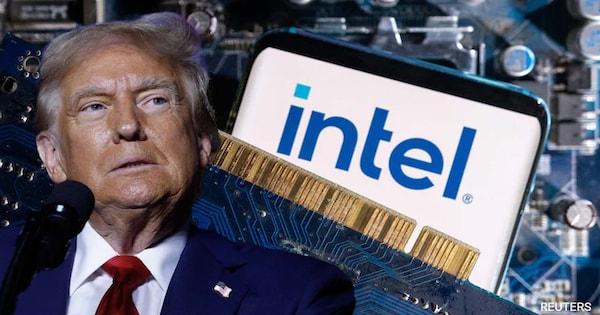CES 2026: How Emerging Technology is Shaping the Year Ahead
An expert breakdown of CES 2026, exploring how robotics, intelligent devices, and next‑gen computing are shaping technology and professional workflows in 2026.

The U.S. government has officially acquired a 10% stake in Intel to enhance domestic semiconductor production. This strategic move could reshape the global chip industry and boost America’s technological dominance.
In a historic move, the U.S. government has officially acquired a 10% ownership stake in Intel, one of the world’s largest semiconductor manufacturers. The decision marks a significant step toward strengthening domestic chip production, reducing dependence on foreign suppliers, and ensuring America’s long-term technological leadership.
The semiconductor industry is at the heart of modern technology, powering smartphones, AI systems, electric vehicles, defense technologies, and data centers. Over the past few years, global chip shortages and supply chain disruptions exposed America’s over-reliance on overseas manufacturing, especially in Taiwan and South Korea.
This new deal ensures the U.S. can secure critical semiconductor capacity and avoid risks associated with geopolitical tensions in Asia.
Key reasons behind the investment include:
With this investment, Intel gains massive government support to scale production and lead innovation. The deal will accelerate:
Intel’s rivalry with NVIDIA, AMD, and Samsung is expected to intensify as the U.S. aims to dominate the global semiconductor race.
This strategic acquisition ties closely to the CHIPS and Science Act, a federal initiative aimed at reviving semiconductor manufacturing in the U.S.. Analysts expect:
With rising global demand for high-performance chips, this investment places America at the center of AI, quantum computing, and next-gen chip production.
The announcement immediately impacted Intel’s stock price, with trading volumes spiking across Wall Street. Market experts believe this deal could drive long-term revenue growth and solidify Intel’s leadership position. However, challenges remain, including scaling production capacity and maintaining competitive pricing.
For everyday consumers, this deal could lead to:
The investment strengthens domestic semiconductor production, reduces foreign dependency, and boosts technological security.
It intensifies competition with TSMC, Samsung, and NVIDIA, shifting more production to U.S. soil and reducing reliance on Asian manufacturing.
Yes. Expect faster innovation in AI, processors, and cloud computing chips due to increased funding and R&D investment.
Absolutely. This aligns with the federal initiative to revive American semiconductor manufacturing and secure national tech independence.
An expert breakdown of CES 2026, exploring how robotics, intelligent devices, and next‑gen computing are shaping technology and professional workflows in 2026.
Comprehensive guide to using AI tools for content creation, marketing automation, and audience engagement. Discover practical strategies for SEO optimization, social media management, and maintaining brand authenticity while scaling content production.
TIME Magazine has honored the AI Architects as its 2025 Person of the Year, acknowledging their groundbreaking work that pushed artificial intelligence to the center of global innovation.
